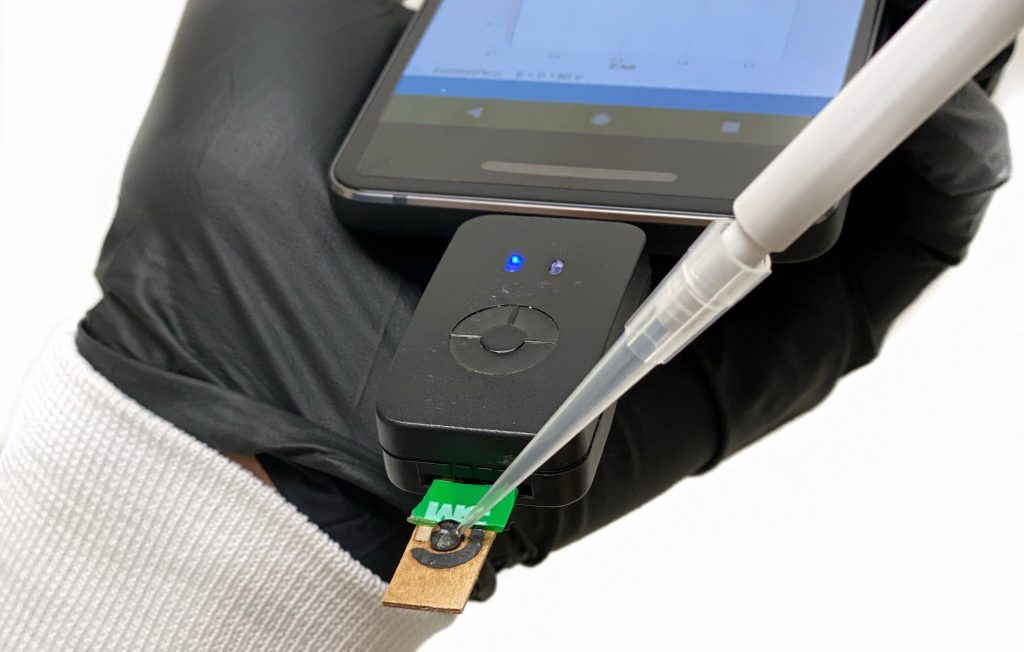
The lab of Penn’s César de la Fuente sits at the interface of machines and biology, with much of its work focused on innovative treatments for infectious disease. When COVID-19 appeared, de la Fuente and his colleagues turned their attention to building a paper-based biosensor that could quickly determine the presence of SARS-CoV-2 particles from saliva and from samples from the nose and back of the throat. The initial iteration, called DETECT 1.0, provides results in four minutes with nearly 100% accuracy.
Clinical trials for the diagnostic began Jan. 5, with the goal of collecting 400 samples—200 positive for COVID-19, 200 negative—from volunteers who also receive a RT-PCR or “reverse transcription polymerase chain reaction” test. This will provide a comparison set against which to measure the biosensor to determine whether the results the researchers secured at the bench hold true for samples tested in real time. De la Fuente expects the trial will take about a month.
If all goes accordingly, he hopes these portable rapid breath tests could play a part in monitoring the COVID status of faculty, students, and staff around Penn.

Taking on COVID-19 research in this fashion made sense for this lab. “We’re the Machine Biology Group, and we’re interested in existing and emerging pathogens,” says de la Fuente, who has appointments in the Perelman School of Medicine and School of Engineering and Applied Science. “In this case, we’re using a machine to rapidly detect SARS-CoV-2.”
To this point in the pandemic, most SARS-CoV-2 diagnostics have used RT-PCR. Though effective, the technique requires significant space and trained workers to employ, and it is costly and takes hours or days to provide results. De la Fuente felt there was potential to create something inexpensive, quicker, and, perhaps most importantly, scalable.
Continue reading “One Step Closer to an At-home, Rapid COVID-19 Test,” by Michele Berger, at Penn Today.
